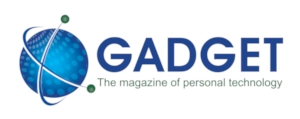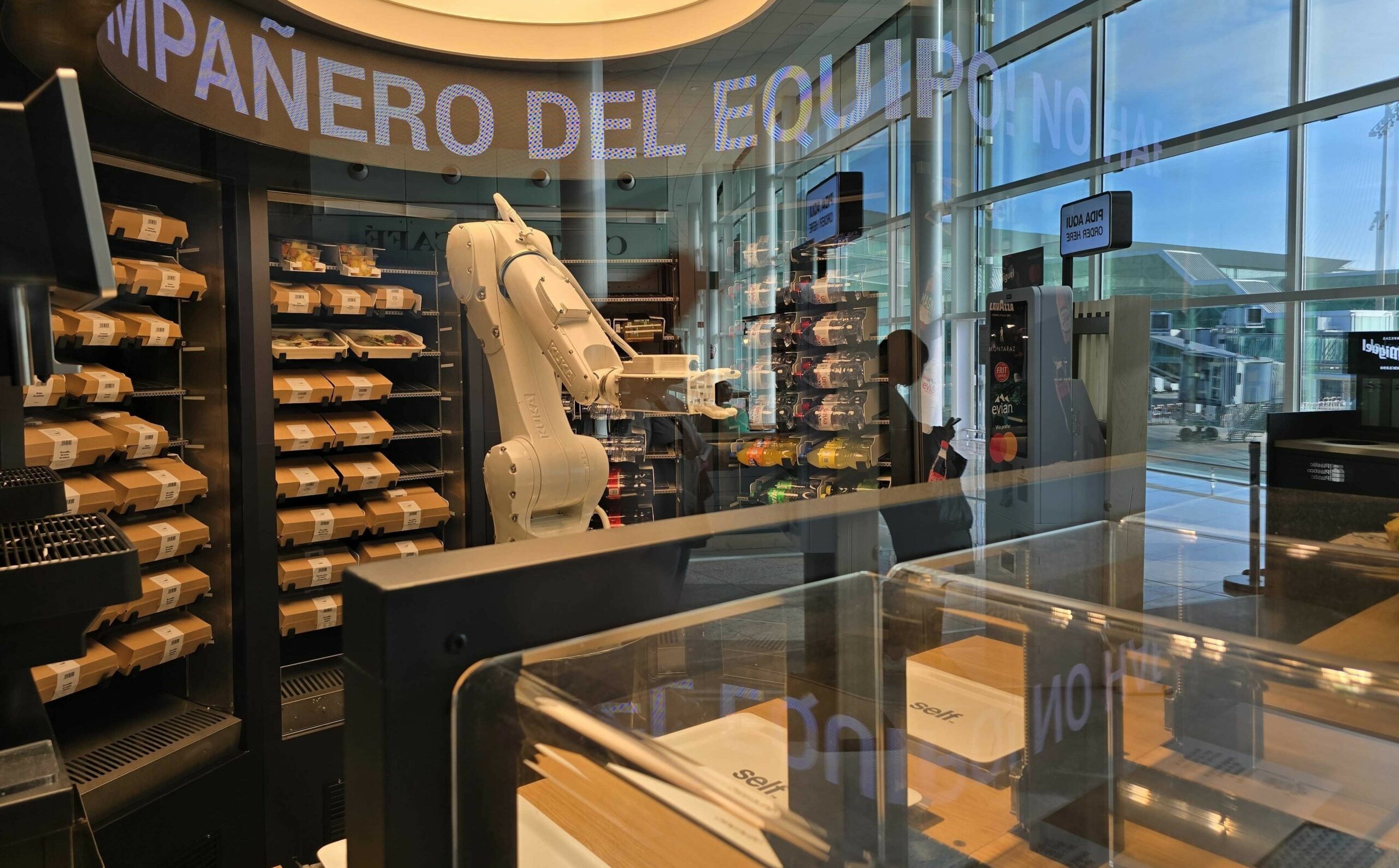GadgetWings
Wings of the Week: Robot restaurant rules BCN airport
At the SELF restaurant, a robot barista got the order right, didn’t ask for a name, and made better coffee than half the humans we know, writes ARTHUR GOLDSTUCK.
Share
- Click to share on X (Opens in new window) X
- Click to share on Facebook (Opens in new window) Facebook
- Click to share on LinkedIn (Opens in new window) LinkedIn
- Click to email a link to a friend (Opens in new window) Email
- Click to share on Reddit (Opens in new window) Reddit
- Click to share on WhatsApp (Opens in new window) WhatsApp
- Click to share on Pinterest (Opens in new window) Pinterest
Touching down at Barcelona’s El Prat Airport, I knew exactly where I was heading. A few weeks earlier, Gadget had reported on the opening of SELF, the world’s first AI-powered robotic restaurant in an airport. Now, I was here to see if the future of airport dining was as slick as the press releases claimed, or if I’d be wrestling with a vending machine in disguise. Positioned in Terminal 1 near Gate B24, the 137-square-meter space is sleek, modern, and designed for efficiency. No queues, no confused cashiers, no questionable food hygiene – just tech doing its thing.
SELF is the brainchild of Areas, a major player in the travel hospitality sector, and it embodies a new phase of airport dining: full-blown automation. At first glance, it looks less like a restaurant and more like a science experiment that escaped from an innovation lab. No cashiers, no baristas, no surly kitchen staff. The idea is simple: order, scan, collect, and go.

Photo: ARTHUR GOLDSTUCK
I stepped up to the ordering kiosk, a giant touchscreen that made the process almost idiot-proof, aside from confusion between Cancel and Back on some screens. The menu was surprisingly extensive for a place without human hands anywhere in the mix: sandwiches, salads, poké bowls, pastries, and drinks that didn’t come out of a can. I went for a salmon roll and a café latte, paid with a tap, and got my QR code. No misunderstandings, no awkward small talk, just a coldly efficient transaction. But then again, McDonalds has been getting that part right for years.
Then, the real show began. Behind a glass panel, a robotic arm whirred into action. With a series of swift, efficient movements, it grabbed, placed, and assembled with a precision that would put a sushi chef to shame. The coffee machine hummed to life, dispensing liquid gold into a cup with laser-guided accuracy. At no point did a human sigh in frustration or get my name wrong.

Photo: ARTHUR GOLDSTUCK
The system handles up to six orders at once, all synchronised in a mechanical ballet that almost made up for the lingering effects of the poor audio on the Lufthansa inflight movie on the trip from Johannesburg.
Barely a minute later, my order was ready. I scanned my QR code at the pickup station, and the tray with box and cup slid out of its sanitised kiosk compartment, along a short conveyor belt, into the airport air. This, it struck me, was a science-fiction lunchbox.
The salmon roll was fresh, neatly assembled, exactly as advertised, with no mystery ingredients or excessive mayo trying to hide sins. And it was tasty. The café latte was smooth, rich, and served at exactly the right temperature. The robots might lack personality but, by airport standards, they sure make a decent coffee, courtesy of Lavazza beans.
I grabbed a seat in the dining area, which manages to be functional without feeling like a soulless cafeteria. Natural foliage offsets minimalist design, making it feel less like an airport holding pen and more like a place you might voluntarily sit in for longer than five minutes. Integrated charging stations are a blessing for anyone with a phone clinging to its last 5% of battery life as a result of the airplane power port once again refusing to dispense power. If robots are taking over, at least they’re considerate about it.
But is this the future of airport dining? If efficiency is the goal, then absolutely. No long waits, no human error, no eye-rolling from an underpaid employee who wants the shift to end. It’s clean, fast, and reliable. In short, it’s what a time-crunched traveller wants.
There are downsides. Customisation is limited, so if you’re the type to ask for “hot milk, but not too hot, with a dash of cinnamon, but only if harvested by moonlight,” this probably is the wrong place for you.
How much does it cost?
For an airport dining option, SELF is reasonable. The salmon roll cost €15.95 and café latte €1.90. Not cheap in ZAR, but not excessive in Europe. In short, you’re not taking out a loan just to eat before your flight.
Why does it matter?
SELF isn’t just a gimmick. It’s a pointer to where high-volume, fast-service dining is headed. AI and robotics are proving they can handle food service with the precision of a Formula 1 pit crew. Whether this model expands beyond airports remains to be seen, but for now, it’s slick, functional, and weirdly fascinating.
What are the biggest negatives?
- No real flexibility for customisation. What you see is what you get.
- Functional seating, so don’t expect to get too comfortable.
What are the biggest positives?
- Blazing-fast service, ideal for impatient travellers.
- Competitive pricing compared to usual airport food frights.
- Consistently high-quality food with zero chance of human error.
* Arthur Goldstuck is CEO of World Wide Worx and editor-in-chief of Gadget.co.za. Follow him on Bluesky on @art2gee.bsky.social.
Share
- Click to share on X (Opens in new window) X
- Click to share on Facebook (Opens in new window) Facebook
- Click to share on LinkedIn (Opens in new window) LinkedIn
- Click to email a link to a friend (Opens in new window) Email
- Click to share on Reddit (Opens in new window) Reddit
- Click to share on WhatsApp (Opens in new window) WhatsApp
- Click to share on Pinterest (Opens in new window) Pinterest
| Thank you for Signing Up |



















